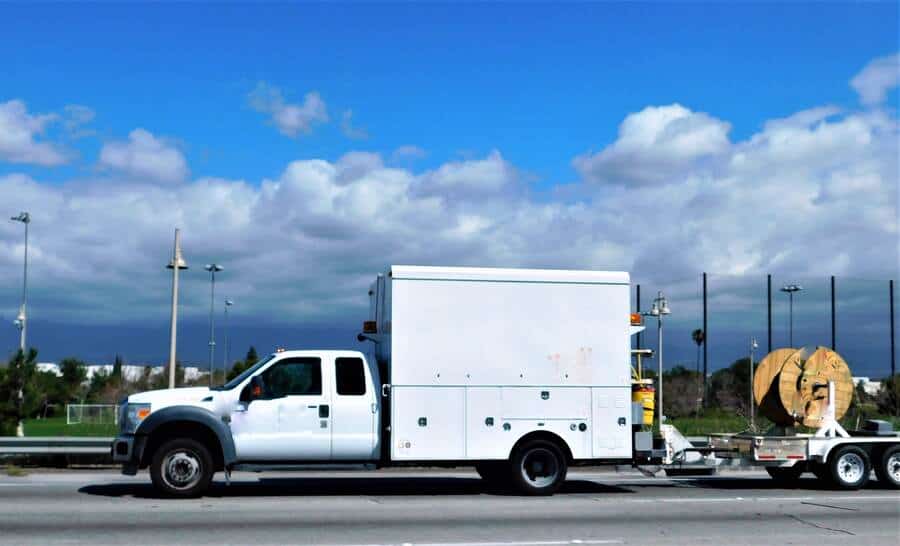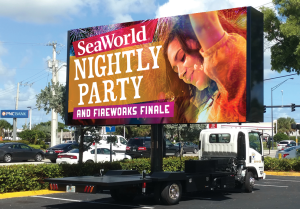Trucks Advertising Is Not What It Promises in the City
Trucks advertising has long been hailed as a dynamic way to take your brand on the road. It’s mobile. It’s large-scale. And it seems to guarantee impressions. But if your campaign is targeting urban environments, you may want to hit the brakes. The truth is that trucks advertising, despite its size and movement, underperforms in cities where competition for attention and space is at its highest.
Marketing professionals looking to maximize ROI, brand recall, and conversion must confront a reality: trucks advertising is more bark than bite in urban settings. Let’s unpack the inefficiencies behind trucks ads—and why in-hand alternatives may be the smarter, scalable strategy.
Trucks Advertising: The Hidden Limitations of Urban Mobility
While trucks advertising claims to be mobile, visibility in crowded cityscapes is actually limited. Here’s why:
Urban Congestion Reduces Mobility
Trucks move slowly in cities. Heavy traffic, frequent stops, and unpredictable routes mean the impression count is far lower than promised. A truck ad crawling through Manhattan at 5 mph doesn’t deliver meaningful brand impact—it’s just part of the noise.
Dwell Time Is Low—and So Is Attention
Drivers and pedestrians are already overstimulated. Between rideshare pickups, honking, and digital distractions, a truck ad gets a few seconds of fragmented attention—if that. Unlike a branded coffee sleeve or pharmacy bag that’s held in-hand for minutes, a truck ad is a fleeting blur.
Parking Limitations Kill Visibility
Many trucks advertising services claim 24/7 exposure by parking in high-traffic areas. The reality? Strict parking regulations, tow zones, and restricted commercial loading zones often force trucks out of prime visibility spots. This leads to off-hour parking or side-street placements with minimal foot traffic.
Trucks Ads vs. In-Hand Impressions: What Really Drives Engagement?
Let’s compare trucks ads with in-hand media in three key performance areas:
Recall and Engagement
A Trucks ad is usually seen in motion—making it hard to scan, let alone remember. Studies show touch-based media creates stronger memory encoding because of the tactile connection. A QR code on a pizza box, for instance, stays with the consumer longer and has higher interaction rates.
Precision Targeting
Most trucks advertising routes are wide and generalized. By contrast, in-hand media can be ZIP-code targeted—such as delivering door hangers in high-income neighborhoods or placing ads on pharmacy bags in underserved healthcare zones. This precision matters when you’re trying to reach niche demographics or test local messaging.
Consumer Trust
People don’t trust ads that feel forced or impersonal. In-hand formats are delivered in trusted environments—at home, in clinics, in cafés. A Trucks advertisement, in contrast, is perceived as intrusive, promotional noise on a busy street.
Trucks Advertisement: A Question of ROI and Attribution
Let’s talk performance metrics—because every marketing leader needs to justify spend.
Difficult to Attribute Action
How do you track ROI from a moving truck? While some companies offer GPS data, you don’t know who saw it, when, or if it worked. There’s no click, no scan, no lead. In contrast, in-hand media formats often include scannable QR codes, promo codes, or SMS triggers that tie directly to conversion.
Inflated CPMs
Though trucks advertising may appear cost-effective on paper, the actual cost-per-meaningful-impression is inflated by its low dwell time and weak targeting. A pharmacy bag ad or branded coffee cup, in comparison, reaches a captive audience in a high-dwell zone—often at a fraction of the cost.
The Environmental and Brand Safety Concerns of Trucks Ads
Trucks Ads Come with a Carbon Footprint
Running a fleet of trucks across a city for branding purposes is not aligned with sustainability goals. As brands shift toward ESG (Environmental, Social, and Governance) metrics, trucks advertising becomes harder to justify. In-hand formats like eco-friendly coasters, paper bags, or biodegradable door hangers present a better alternative.
Brand Placement Risks
Let’s face it—you can’t always control where your truck ad ends up. Parked near a strip club? Outside a political rally? Stuck in construction zones? These moments can create brand association you didn’t intend. Place-based media like ads inside doctor’s offices or clinics offers a curated, brand-safe environment.
The In-Hand Alternative: Where Tactile Meets Tactical
If trucks advertising is limited in reach, trust, and performance, what’s the answer?
Tactile Advertising in Trusted Venues
Formats like:
Pharmacy bag advertising
Grocery cart handle ads
Branded pizza boxes
Hand sanitizer stand ads
These all provide one-to-one engagement during moments of relevance. You’re not driving by the audience—you’re in their hands, often during decision-making micro-moments.
QR-Powered Interactivity
Each piece of in-hand media can be equipped with a QR code, enabling:
Real-time attribution
Promo tracking
Content personalization
Engagement metrics that prove ROI
You can’t scan a moving truck. But you can scan a coffee sleeve while waiting at the DMV.
Trucks Advertising Isn’t Built for Today’s Marketing Goals
Let’s summarize. While trucks ads may look bold and mobile, they underperform in real-world urban settings:
Low dwell time
Weak targeting
Attribution challenges
Environmental concerns
Brand safety risks
Modern marketers need more precision, more accountability, and more emotional relevance—which is exactly what in-hand media delivers.
Skip the Traffic. Be in Their Hands.
If you’re still spending on trucks advertising in cities, it’s time to reconsider. In a world of fleeting attention and data-driven strategy, immersion beats interruption. Tactile, localized ads meet your audience where they live, wait, eat, and heal—with higher trust and better results.
Want to learn how in-hand media can replace your mobile billboard strategy? Adzze specializes in pharmacy bags, coffee sleeves, pizza boxes, grocery carts, and more—all QR-enabled and geo-targeted.
Let’s turn your next campaign into something they can’t ignore—because it’s already in their hands.
https://youtube.com/shorts/eOK_Bq5TxlY?si=7ygfLBNM5VoDbnfH






